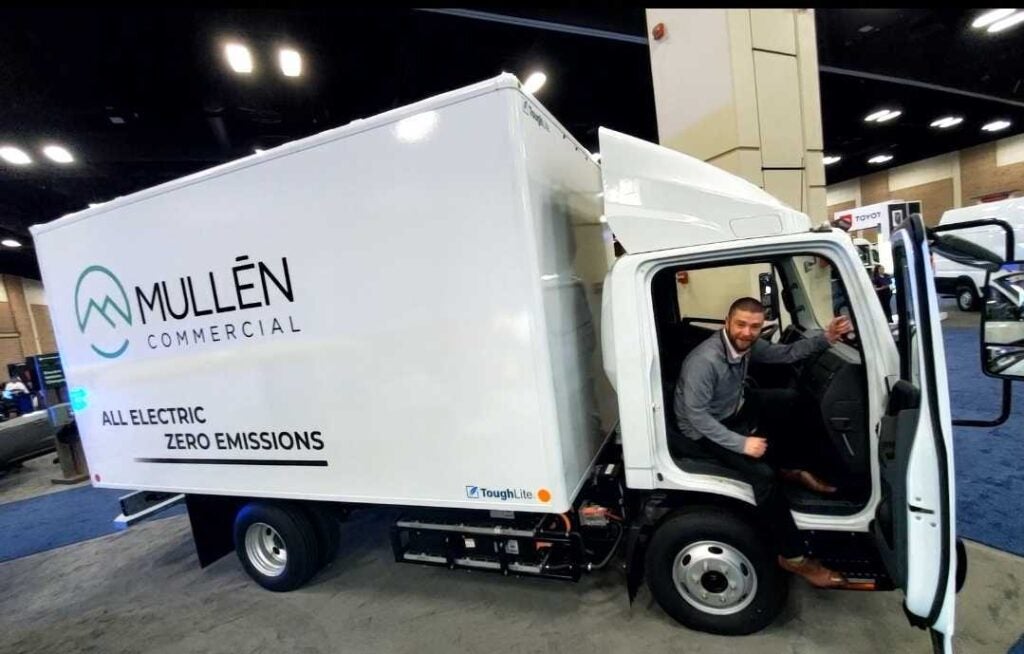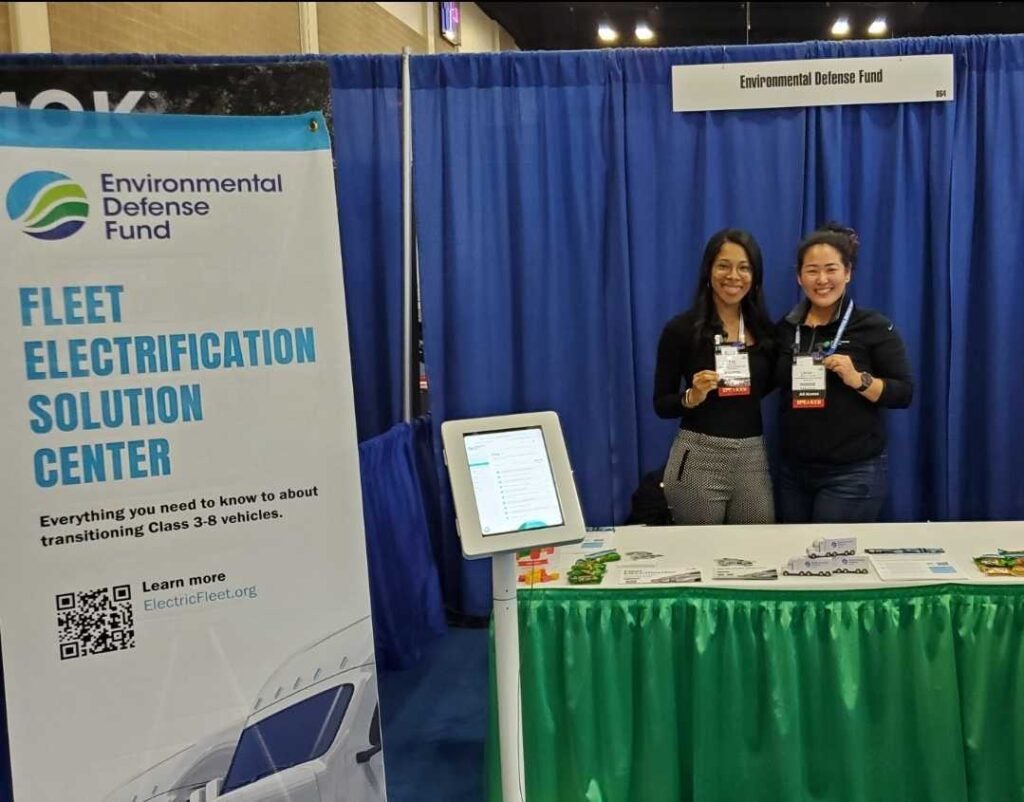At NAFA 2024, fleets are finding the ways that work on their electrification journey
By Lindsay Shigetomi and Kae Tuitt
This week, EDF witnessed the hardworking spirit of the fleet industry at the NAFA Fleet Management Association’s Institute and Expo, where thousands of fleet professionals from all over the country gathered in San Antonio, Texas to learn, share and gain new insights into fleet operations. We saw a level of engagement from fleets and other attendees that showed how the fleet industry is evolving. Fleets are now taking on the additional responsibility as stewards of sustainability projects, which was reflected in the event programming — more than a quarter of the 40-plus educational sessions were focused on sustainability, zero-emission vehicles and electrification.
NAFA invited EDF to present at the conference and speak to attendees about advancing electrification in municipal fleets and the benefits of transition planning. During our three days at the event, we took time to listen to fleet concerns, field questions and offer solutions — even if those solutions were to work together to find a path forward. We also had the opportunity to sit in on some of the educational sessions and connect with industry professionals, including those at the growing Black Fleet Network. Here are our top take-aways from NAFA 2024 for your fleet:
At NAFA 2024, fleets are finding the ways that work on their electrification journey Share on X1.There are resources available now to help fleets on the path to electrification.
One of the biggest themes of the conference was knowledge-sharing. NAFA provides an incredible venue for community members to share real-world experience working toward sustainability goals and navigating the road to electrification, but for many, travel for a conference is not an option. Free resources like EDF’s Fleet Electrification Solution Center make this information more accessible for all fleets to learn from the successes and challenges of others. This tool offers fleet owners and operators a one-stop-shop for all the resources needed to navigate fleet electrification, no matter where they are in the journey.
2.There’s a clear path forward to a zero-emission fleet.
Every fleet is different. There is no one-size fits-all solution for fleets looking to electrify, but there are shared milestones that will support your fleet’s success. Long-term transition plans are key to understanding the feasibility of going electric. These flexible blueprints guide the process over time and give fleets the ability to course correct as the market and technology changes. There are a lot of time-sensitive components involved in electrification, so it’s important for fleets to plan ahead. EDF can help provide guidance on how to get started, what steps to prioritize and how to set achievable timelines.
EDF’s Climate Corps fellowship is another avenue of assistance for fleets undertaking electrification. We pair trained graduate students with different organizations looking to add capacity for support with zero-emission vehicle projects. Applications will reopen in Fall 2024.
3.Including data on human health in your grant applications can improve your chances of getting funding.
Fleet managers can build stronger applications and approve chances of getting funding by understanding the health impacts of their deployments, both within the communities they operate and for their drivers. Exposure to air pollution from diesel trucks and vehicles is linked to a range of adverse health consequences, including increased rates of childhood asthma, heart disease and adverse birth outcomes.
Fleets also have the opportunity to access more funds when choosing to site deployments in overburdened communities where truck traffic is most dense and pollution from these vehicles is highest. Federal programs supporting zero-emission vehicle and infrastructure costs, including those made available through the 2021 Infrastructure Law and the 2022 Inflation Reduction Act, direct 40% of overall benefit to areas designated as disadvantaged communities. Just today, the Biden administration announced nearly $1 billion to fund zero-emission class 6-7 vehicles, infrastructure and workforce development, of which $400 million will be prioritized for projects located in air quality nonattainment areas. At the state level, fleets can secure more funding by directing clean vehicle deployments to benefit these communities, with programs like New Jersey’s Zero Emission Incentive Program granting additional funding on top of the base voucher amount for replacing vehicles operating in overburdened communities.
Sustainability shifts are not easy, but fleets are learning from each other to overcome challenges and identify new solutions. At NAFA, we witnessed this go-getter mentality and a pride in being the people called on to get work done. This is a shared value at EDF. We take what feels like an insurmountable challenge to build a brighter, cleaner future for people and the planet by “finding ways that work.”
EDF has more than two decades of experience partnering with manufacturers like Cummins and Ford, as well as fleet users like Walmart and IKEA to help speed the transition to zero-emission trucks. Please reach out to us so we can keep learning from each other and find the ways that work together.












